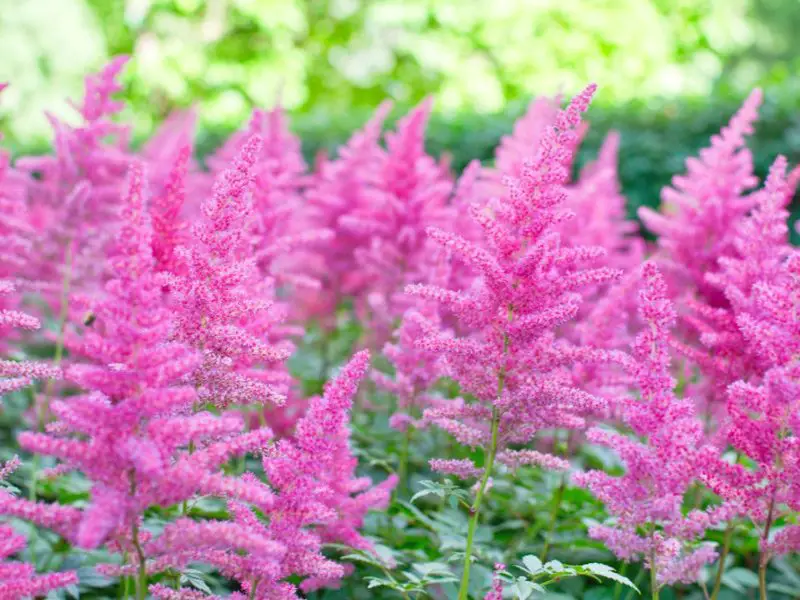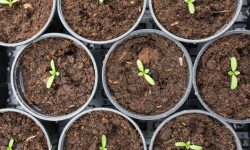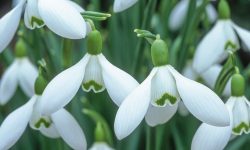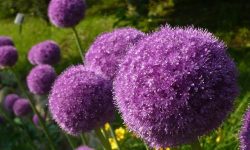Astilbe is a stunning perennial that adds elegance and color to any garden. Its feathery plumes and lush foliage create a vibrant display that attracts attention from early summer to late season. Proper planting timing is essential to ensure strong growth and abundant blooms. Planting too early or too late can stress the plant, reduce flowering, and compromise its overall health. Understanding the best time to plant astilbe helps gardeners create a flourishing garden filled with colorful, long-lasting flowers.
Besides timing, location and soil preparation play crucial roles in astilbe success. Choosing a spot with partial shade and consistently moist, well-draining soil allows roots to establish quickly and supports healthy foliage development. Gardeners must also consider seasonal climate variations to prevent frost damage or heat stress. By following expert guidance on when to plant astilbe, you can enjoy a reliable, vibrant, and low-maintenance perennial that enhances garden aesthetics and provides a spectacular floral display throughout the summer.
Understanding Astilbe and Its Bloom Cycle

Astilbe is a perennial prized for its feathery plumes and vibrant foliage. Its bloom cycle depends on the variety, location, and seasonal conditions. Typically, shoots emerge in early spring as soil warms. Young leaves develop first, forming a healthy base to support flower spikes. Understanding this cycle helps gardeners anticipate when blooms appear and plan care routines to ensure peak display. Healthy foliage is critical, as it provides energy for flower development.
Flowering usually occurs from late spring through mid-summer, though timing varies by cultivar. Early-blooming varieties can start in late May, while mid- and late-season types may continue into July. Soil fertility, light exposure, and consistent moisture influence bloom timing and duration. Proper care, such as regular watering, fertilization, and mulching, supports prolonged flowering. Observing the plant during this phase allows gardeners to identify stress signs like wilting or fading plumes and make timely adjustments to maintain vibrant blooms.
After blooming, astilbe enters a post-flower stage where nutrients shift from flowers to roots and foliage. Deadheading spent plumes encourages energy to return to the root system, strengthening it for the next season. Dividing crowded or aging clumps every few years rejuvenates the plant, supporting consistent flower production. By understanding the complete bloom cycle—from shoot emergence to post-flowering care—gardeners can optimize planting schedules, care practices, and fertilization. This ensures astilbe consistently produces lush, colorful flowers and healthy foliage, creating long-lasting garden beauty season after season.
Best Season to Plant Astilbe
Timing is critical when planting astilbe to ensure strong growth and abundant blooms. The best season for planting is either early spring or early fall. Spring planting allows the roots to establish before the heat of summer, ensuring the plant can produce vibrant plumes. Soil temperature during early spring is warming but not too hot, giving young plants an optimal environment to develop a robust root system. By planting at this time, gardeners maximize the plant’s ability to thrive throughout the growing season.
Fall is another ideal season for planting astilbe. Cooler temperatures and increased rainfall create favorable conditions for root development. Fall-planted astilbe has the advantage of establishing strong roots before winter dormancy, leading to faster growth and earlier blooms in the following spring. Gardeners should plant early enough in the season to allow several weeks for roots to settle before the first frost. Mulching can protect roots during colder months, further supporting plant survival and bloom potential.
Regardless of the season, preparation is essential. Gardeners should select locations with partial shade and consistently moist soil. Amending soil with organic matter improves drainage and fertility, supporting healthy growth. Proper spacing between plants ensures good airflow, reducing disease risk and promoting strong, vibrant foliage. By choosing the right season and preparing the site carefully, astilbe plants establish quickly, producing lush, colorful blooms that enhance any garden throughout summer.
Soil Preparation for Healthy Astilbe Growth
Proper soil preparation is key to ensuring astilbe thrives and produces vibrant blooms. These perennials prefer rich, moist, and well-draining soil. Before planting, remove weeds, rocks, and debris from the chosen area. Loosen the soil to improve aeration and allow roots to penetrate deeply. Adding organic matter, such as compost, leaf mold, or aged manure, enhances fertility, retains moisture, and encourages strong root development. This creates an ideal environment for astilbe to establish quickly and grow vigorously.
Testing soil pH is another important step in preparation. Astilbe prefers slightly acidic to neutral soil, typically with a pH between 6.0 and 7.0. If the soil is too alkaline, nutrients may become unavailable, leading to weaker growth and reduced blooms. Amendments like sulfur or peat moss can lower pH and optimize nutrient uptake. Balanced soil fertility supports both foliage health and flower production, ensuring long-lasting, colorful plumes throughout the season. Gardeners should also consider incorporating a slow-release fertilizer during soil preparation to provide essential nutrients for early growth.
Proper soil drainage is critical to prevent root rot and other moisture-related problems. While astilbe enjoys consistently damp soil, waterlogged conditions can damage roots and reduce flowering. Raised beds or slight mounding can improve drainage in poorly draining areas. Mulching after planting helps retain moisture, regulate soil temperature, and suppress weeds. By carefully preparing soil, gardeners give astilbe the best start, ensuring healthy, vigorous plants that produce stunning, long-lasting blooms season after season.
Planting Techniques for Astilbe
Correct planting techniques are essential for astilbe to establish strong roots and produce abundant blooms. Start by selecting a healthy, disease-free plant. Dig a hole twice as wide and slightly deeper than the root ball to allow room for roots to expand. Gently remove the plant from its container, loosening tangled or circling roots to encourage outward growth. Position the plant at the same depth it grew in the nursery container, ensuring the crown remains slightly above soil level to prevent stem rot or crown damage. Proper placement is key for healthy establishment.
Backfill the hole with a mixture of garden soil and organic matter, such as compost or well-rotted manure, to improve fertility and moisture retention. Firm the soil gently around the roots to remove air pockets while avoiding compaction, which can hinder root growth. Water thoroughly immediately after planting to settle the soil and provide essential moisture for root establishment. Maintaining consistent soil moisture for the first several weeks is critical, as this supports root development and reduces transplant shock. Mulching around the base helps retain moisture, regulate soil temperature, and suppress weeds, creating an optimal environment for growth.
Spacing is another crucial factor. Astilbe should be planted 12 to 18 inches apart depending on the variety, allowing each clump to expand fully without competing for light, water, or nutrients. Proper spacing enhances airflow, reducing the risk of fungal disease, and ensures even, lush foliage growth. Thoughtful arrangement also maximizes visual appeal, creating a garden display filled with vibrant, colorful plumes. By following these careful planting techniques, gardeners give astilbe the foundation to thrive, producing long-lasting, healthy blooms season after season.
Watering and Moisture Management for Astilbe
Consistent moisture is vital for astilbe’s growth and flowering. These perennials thrive in evenly moist soil, which supports lush foliage and robust plumes. During dry periods, water deeply at least once or twice a week, depending on soil type and weather conditions. Avoid letting the soil dry out completely, as this can stress the plant, reduce bloom quality, and cause premature fading. Shallow or infrequent watering can lead to weak roots, making the plant more susceptible to drought damage and poor flower production.
Mulching plays a key role in moisture management. A layer of organic mulch, such as shredded bark, compost, or leaf mold, helps retain soil moisture, regulate temperature, and suppress weeds. Mulch also prevents soil from drying out too quickly in hot weather, reducing the need for frequent watering. Apply mulch around the base of the plants, keeping it a few inches away from the crown to avoid rot. Regularly check soil moisture by feeling the soil; it should remain consistently damp but not waterlogged to promote healthy growth.
Proper irrigation techniques further enhance moisture management. Using drip irrigation or soaker hoses delivers water directly to the root zone while minimizing leaf wetting, which reduces the risk of fungal diseases. Avoid overhead watering that can cause water to sit on foliage and flowers, potentially leading to mildew or other issues. By maintaining consistent soil moisture, applying mulch, and using efficient watering methods, gardeners ensure astilbe plants thrive, producing abundant, vibrant blooms and lush foliage throughout the growing season.
Fertilization Strategies for Astilbe
Fertilization is essential for supporting healthy growth and vibrant blooms in astilbe. Applying a balanced, slow-release fertilizer in early spring provides necessary nutrients for root development and strong shoots. Nitrogen encourages healthy foliage, while phosphorus supports flower formation. Well-timed fertilization ensures the plant has energy to produce lush plumes and abundant foliage throughout the season. Choosing a fertilizer with a balanced N-P-K ratio promotes overall vigor and sustained flowering.
During the growing season, supplemental feeding can help maintain bloom quality. Light applications of water-soluble fertilizer every few weeks support continuous growth without overloading the plant. Excess nitrogen should be avoided, as it can encourage excessive leaf growth at the expense of flowers. Combining fertilization with regular watering and mulching ensures nutrients are absorbed efficiently and encourages long-lasting, vibrant blooms. Observing plant response allows gardeners to adjust feeding frequency and dosage for optimal results.
After flowering, a final fertilization can support root and foliage development for the following season. Organic fertilizers, compost, or well-rotted manure replenish soil nutrients naturally, strengthening the plant for future blooms. Proper fertilization strategies, combined with attentive care, seasonal maintenance, and soil management, ensure astilbe remains vigorous and capable of producing abundant, colorful flowers. By following these guidelines, gardeners can enjoy reliable, long-lasting blooms and healthy plants that enhance the beauty of any garden year after year.
Common Problems That Affect Astilbe Growth and Bloom
Overwatering and Root Rot
Excessive watering is a common problem for astilbe, often leading to root rot and weakened growth. Astilbe thrives in consistently moist soil, but when soil becomes waterlogged, roots cannot absorb oxygen efficiently. Poor drainage, compacted soil, or heavy clay areas exacerbate this issue, resulting in yellowing leaves, stunted growth, and reduced flower production. Early signs of overwatering include wilting despite wet soil and a foul smell from roots. Gardeners must carefully monitor soil moisture, ensuring it remains damp but not saturated.
Preventing root rot involves improving soil structure and drainage. Incorporating organic matter like compost or leaf mold enhances soil aeration while retaining moisture. Mulching around the base keeps soil evenly damp without oversaturation. Raised beds or slight mounding in problem areas facilitate water runoff, preventing stagnant conditions. Watering should be adjusted according to rainfall, temperature, and seasonal changes. By balancing moisture and drainage, astilbe develops strong, healthy roots, supporting vibrant foliage and abundant blooms. Proper care reduces disease risk and ensures plants thrive over multiple growing seasons.
Pest Infestations
Astilbe can be vulnerable to pests including aphids, slugs, and spider mites, which damage foliage and flowers. Aphids feed on sap, causing leaf distortion and transmitting viruses. Slugs target tender shoots, leaving irregular holes, while spider mites, especially in dry conditions, can discolor leaves and weaken the plant. Infestations reduce photosynthesis, hinder bloom development, and compromise overall plant vigor. Regular inspection is critical to catch pest problems early and minimize damage.
Effective pest management combines cultural and biological strategies. Handpicking slugs and spraying water to dislodge aphids are simple yet effective methods. Introducing beneficial insects, such as ladybugs, controls aphid populations naturally. Using insecticidal soaps or organic treatments targets pests without harming pollinators or soil health. Maintaining proper watering and fertilization strengthens plants, making them less attractive to pests. With vigilant monitoring and prompt action, astilbe maintains healthy foliage and prolific blooms throughout the season, ensuring a visually stunning and resilient garden display.
Fungal Diseases
Fungal diseases, including powdery mildew and leaf spot, can significantly impact astilbe’s health. Powdery mildew appears as white, powdery coating on leaves, while leaf spot produces brown or black lesions. These infections reduce photosynthetic ability, weakening plants and limiting bloom production. High humidity, poor airflow, and overcrowded planting conditions exacerbate fungal outbreaks. Gardeners need to be proactive, identifying early symptoms to prevent widespread damage.
Preventive care is the most effective strategy. Proper plant spacing and pruning improve airflow, reducing moisture accumulation on leaves. Mulching minimizes soil splashing that spreads fungal spores, while removing infected foliage prevents pathogen buildup. Fungicides or organic treatments can be applied if necessary. Consistent watering at the soil level and avoiding plant stress further enhances disease resistance. Healthy, well-maintained astilbe withstands fungal challenges, ensuring consistent plumes and lush foliage. By combining these preventive measures with attentive care, gardeners enjoy vibrant, disease-resistant plants year after year.
Propagation Techniques for Astilbe
Astilbe can be propagated effectively through division, which is the most reliable method. Mature clumps are dug up either in early spring before new growth starts or in late summer after flowering. Using a sharp, clean knife or spade, the clump is separated into smaller sections, each containing a portion of roots and shoots. Replanting divisions immediately in well-prepared soil with consistent moisture encourages rapid establishment. This method rejuvenates older plants, promoting vigorous growth, and ensuring more abundant, vibrant blooms in the following seasons. Proper care after division, including mulching and regular watering, supports healthy root development and plant resilience.
Propagation can also be achieved through root cuttings, particularly for preserving rare or hybrid astilbe varieties. Healthy roots are removed in early spring, cut into sections, and planted in moist, well-draining soil. Maintaining humidity and indirect light encourages sprouting. Root cuttings allow gardeners to expand their collection while retaining the parent plant’s genetic characteristics. With careful monitoring, cuttings establish into healthy plants capable of flowering within one to two seasons, providing a reliable method for propagating valuable or unusual cultivars.
Seed propagation is less common but offers opportunities for experimentation. Seeds are collected from mature flowers in late summer or early fall and sown in seed trays with fine, well-draining soil. Consistent moisture and warmth support germination, while seedlings require careful maintenance and protection from harsh conditions. Although slower than division, this method allows gardeners to explore new cultivars and color variations. Mastering these propagation techniques ensures a continuous supply of healthy, vibrant astilbe plants, enabling gardeners to create lush, colorful garden displays year after year.
Best Time to Propagate Astilbe
Timing is critical for successful propagation of astilbe. The best periods are early spring, just as new shoots begin to emerge, and late summer, after the plant has finished flowering. Early spring propagation allows plants to establish roots before the heat of summer, giving them a strong start for robust growth. Division or root cutting during this time benefits from increasing daylight and warming soil, which promotes active root and shoot development.
Late summer is another ideal time, particularly for division. After blooming, astilbe has accumulated energy in its roots, making it easier to separate clumps without stressing the plant. Cooler temperatures and moderate moisture during late summer encourage roots to establish before winter dormancy. Gardeners should ensure divisions are planted several weeks before the first frost, giving roots sufficient time to anchor in the soil. Proper site selection, soil preparation, and consistent watering during this period are essential for successful establishment.
Seed propagation also follows seasonal timing, with sowing recommended in late summer or early fall for germination the following spring. Some gardeners start seeds indoors in late winter to gain a head start, providing warmth and controlled conditions to encourage early sprouting. Understanding the best time to propagate astilbe, whether by division, root cutting, or seed, ensures stronger plants, healthier growth, and abundant blooms. Proper timing maximizes success and helps gardeners maintain a lush, colorful display year after year.
Aftercare and Maintenance Following Propagation
Watering and Moisture Management
Proper watering is critical after propagation to ensure roots establish effectively. Newly divided clumps or root cuttings require consistently moist soil to develop strong roots. Watering too little stresses the plant, slowing growth and reducing future bloom potential. Conversely, overwatering can suffocate roots and cause rot, particularly in poorly drained soils. Gardeners should monitor soil moisture daily during the first few weeks and adjust watering based on rainfall and temperature, ensuring the soil remains damp but not waterlogged.
Mulching around the base helps retain soil moisture, regulate temperature, and suppress weeds. Organic mulch such as shredded bark, leaf mold, or compost creates a stable environment for developing roots. Avoid placing mulch directly on the crown, as this can trap moisture and lead to rot. Consistent moisture management supports vigorous root development, healthy foliage, and abundant flower production. With proper watering and mulching practices, propagated astilbe establishes quickly and grows into robust, long-lasting plants capable of thriving in subsequent seasons.
Fertilization and Nutrient Support
Proper watering is critical after propagation to ensure roots establish effectively. Newly divided clumps or root cuttings require consistently moist soil to develop strong roots. Watering too little stresses the plant, slowing growth and reducing future bloom potential. Conversely, overwatering can suffocate roots and cause rot, particularly in poorly drained soils. Gardeners should monitor soil moisture daily during the first few weeks and adjust watering based on rainfall and temperature, ensuring the soil remains damp but not waterlogged. Early-care care is especially important for divisions or root cuttings, as their survival depends on quick establishment of healthy roots.
Mulching around the base helps retain soil moisture, regulate temperature, and suppress weeds. Organic mulch such as shredded bark, leaf mold, or compost creates a stable environment for developing roots. Avoid placing mulch directly on the crown, as this can trap moisture and lead to rot. Mulch also protects soil from drying out quickly in hot weather and reduces the need for frequent watering. Consistent moisture management supports vigorous root development, healthy foliage, and abundant flower production. With proper watering and mulching practices, propagated astilbe establishes quickly and grows into robust, long-lasting plants capable of thriving in subsequent seasons and producing strong, vibrant blooms.
Fertilization and Nutrient Support
Providing nutrients after propagation is essential for recovery and vigorous growth. Light applications of balanced, slow-release fertilizer help young roots establish without overwhelming the plant. Fertilizers rich in phosphorus support root development, while moderate nitrogen encourages healthy foliage. Excess nitrogen, however, can promote leaf growth at the expense of flowers, so gardeners should use fertilizers judiciously. Healthy roots combined with adequate nutrients ensure stronger plant establishment and optimal flowering in the first season.
Incorporating organic matter, such as compost or aged manure, into the soil provides additional micronutrients and improves soil structure. Observing plant growth allows adjustments in fertilization to optimize performance. Fertilization should be combined with proper watering and mulching to maximize nutrient uptake and plant resilience. Consistent attention to post-propagation nutrition ensures propagated astilbe develops strong roots, lush foliage, and vibrant blooms. By providing careful nutrient support, gardeners promote healthy, long-lasting plants that flourish throughout the growing season and maintain a beautiful, thriving garden display.
Monitoring for Pests and Diseases
Newly propagated astilbe is particularly vulnerable to pests and diseases because its root system and shoots are still developing. Common pests include aphids, slugs, and spider mites, which can damage young foliage and stunt growth. Fungal infections, such as powdery mildew and leaf spot, pose additional threats, especially in damp, poorly ventilated conditions. Early detection and intervention are crucial to prevent long-term damage and ensure plants remain healthy and vigorous during establishment.
Regular inspections allow gardeners to remove pests manually or use targeted organic treatments safely. Ensuring adequate spacing, proper airflow, and consistent moisture reduces susceptibility to fungal diseases. Healthy, well-cared-for propagated plants develop strong roots, vibrant foliage, and abundant flowers. Gardeners should also monitor environmental conditions, adjusting watering and sunlight as needed to reduce stress. Vigilant monitoring and attentive care maximize survival rates and promote a flourishing astilbe garden year after year, establishing plants that remain resilient, productive, and visually appealing throughout each growing season.
Common Mistakes to Avoid When Propagating Astilbe
Propagating at the Wrong Time
One common mistake is attempting propagation at the wrong time of year. Propagating too early in winter can expose young divisions or cuttings to frost, causing damaged roots and stunted growth. Late-season propagation, after the onset of colder weather, may not allow sufficient time for roots to establish before dormancy. Plants propagated during unsuitable periods often exhibit poor growth, increased stress, or even total failure to survive. Choosing the correct season, such as early spring before new shoots emerge or late summer after flowering, provides favorable conditions for root development and strong establishment.
Timing also affects plant energy and nutrient availability. Early spring propagation benefits from increasing daylight and warming soil, encouraging rapid shoot and root growth. Late summer divisions take advantage of stored root energy, enabling new sections to establish effectively before winter. Gardeners who understand seasonal cycles and propagation timing reduce plant stress and increase the likelihood of vigorous growth. Avoiding propagation at the wrong time ensures astilbe develops lush foliage, vibrant plumes, and resilient roots, giving a strong foundation for future flowering seasons and long-term garden success.
Overwatering or Underwatering
Improper watering is another common mistake during propagation. Overwatering can suffocate roots, leading to root rot and fungal problems, especially in poorly drained soil. Underwatering, on the other hand, stresses young plants, preventing proper root development and reducing future flowering potential. Newly propagated divisions or root cuttings need consistently moist soil, but excess water can be just as harmful as insufficient water. Gardeners should monitor soil moisture carefully, adjusting watering based on weather, soil type, and seasonal changes to maintain the right balance.
Mulching around the base helps retain moisture while regulating soil temperature. Checking soil moisture before watering prevents over-saturation and ensures plants receive just enough hydration. Adequate watering promotes strong root systems, healthy foliage, and vibrant blooms. Consistency is key: gradual, even watering fosters plant resilience and accelerates establishment. By avoiding the extremes of overwatering and underwatering, gardeners can maximize the success of propagated astilbe, ensuring vigorous growth and stunning garden displays in subsequent seasons.
Neglecting Pest and Disease Management
Neglecting pests and diseases during early propagation is a critical error. Young astilbe plants are vulnerable to aphids, slugs, spider mites, and fungal infections, which can stunt growth, reduce flower production, or even kill the plant. Ignoring pest management allows infestations to spread quickly, compromising plant health and wasting propagation efforts. Early detection and intervention are crucial to prevent severe damage and maintain a thriving garden.
Preventive strategies include providing adequate spacing for airflow, proper watering to avoid overly damp conditions, and removing diseased foliage promptly. Regular inspections allow gardeners to handpick pests or apply organic treatments safely, protecting tender roots and shoots. Maintaining optimal growing conditions and monitoring plant health ensures propagated astilbe establishes strong roots, vibrant foliage, and abundant flowers. Vigilance during the initial stages of growth is essential to maximize success and ensure long-term resilience, producing a beautiful, colorful garden year after year.
FAQ About When to Plant Astilbe
When is the best time to plant astilbe?
The ideal time to plant astilbe is early spring or late summer. Early spring allows roots to establish before hot weather, while late summer planting takes advantage of cooler temperatures and soil warmth. Proper timing ensures strong root growth, healthy foliage, and abundant blooms in the following season.
How should I prepare the soil for astilbe?
Astilbe thrives in rich, well-draining soil. Before planting, amend the soil with compost or organic matter to improve fertility and moisture retention. Avoid heavy clay or compacted soil without amendment. Proper soil preparation promotes strong root establishment, vigorous growth, and vibrant flower production.
How often should I water newly planted astilbe?
Newly planted astilbe requires consistently moist soil. Water regularly, especially during dry periods, to keep soil damp but not waterlogged. Mulching around the base helps retain moisture and regulate temperature. Balanced watering encourages healthy roots and lush foliage, supporting long-lasting blooms.
Can astilbe grow in partial shade?
Yes, astilbe prefers partial shade but can tolerate full sun in cooler climates if soil remains consistently moist. Too much direct sunlight without adequate water may cause leaf scorching or reduced flowering. Choosing a location with morning sun and afternoon shade ensures optimal growth and vibrant blooms.
How do I prevent pests and diseases in astilbe?
Preventing pests and diseases involves proper spacing, adequate airflow, and consistent moisture management. Monitor regularly for aphids, slugs, and fungal infections. Remove diseased foliage promptly and use organic treatments when needed. Healthy plants with proper care are more resistant and produce abundant, long-lasting flowers.
Conclusion
Proper timing and care are essential for successful astilbe planting. Choosing the right season, preparing nutrient-rich soil, and providing consistent moisture ensures strong root establishment and vibrant blooms. Avoid common mistakes like improper watering, poor site selection, or neglecting pests to maximize plant health. With attention to soil, sunlight, and seasonal conditions, astilbe thrives, producing lush foliage and stunning plumes year after year. By following expert guidance, gardeners can enjoy a resilient, colorful, and long-lasting display, transforming any garden space into a vibrant, fragrant summer paradise filled with beautiful astilbe flowers.






